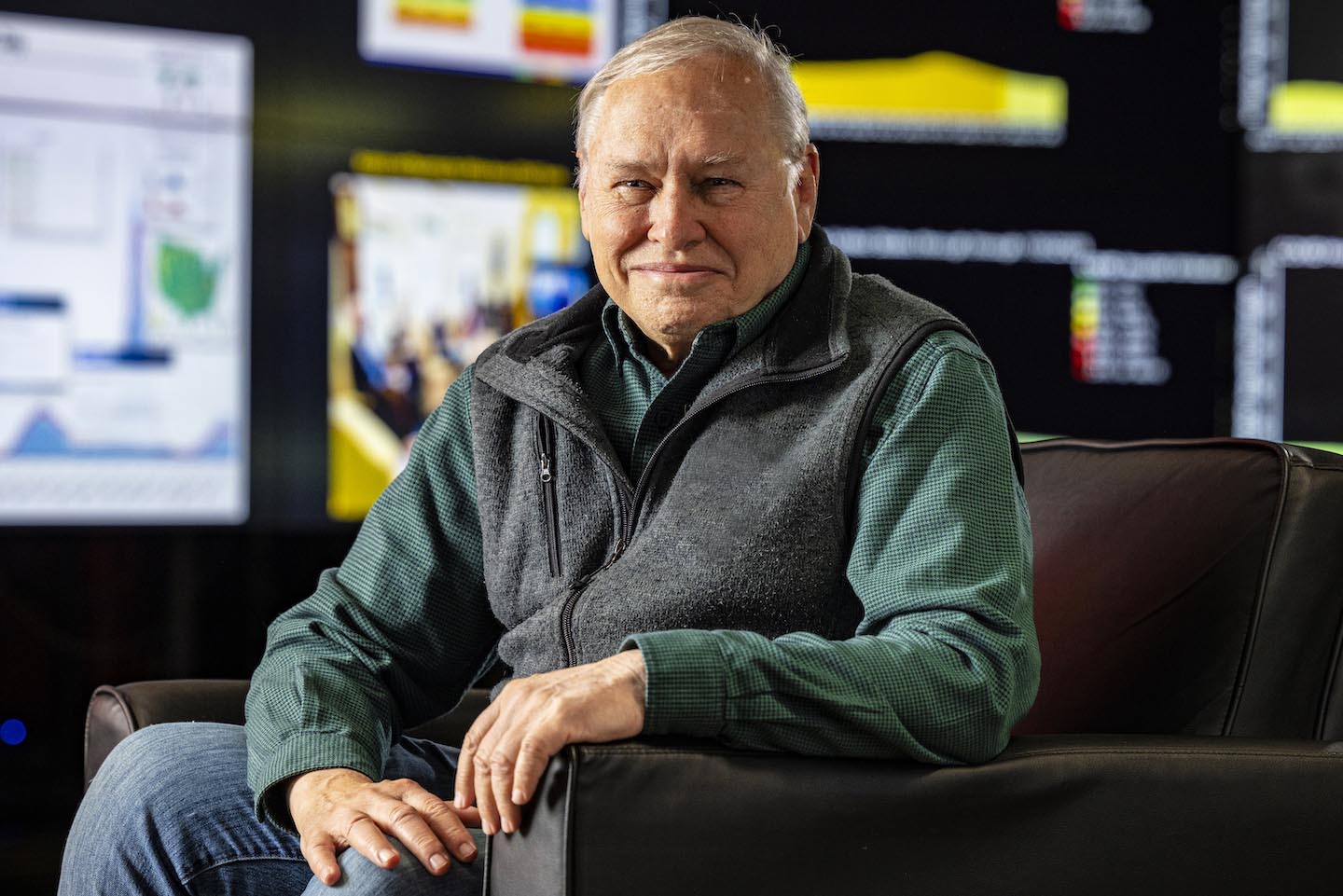News
Codebreaker Dickie George Inducted Into National Cryptologic Hall of Honor
One of the world’s foremost codebreaking mathematicians was recognized by the National Security Agency (NSA) on May 8 when Richard “Dickie” George was inducted into the National Cryptologic Hall of Honor. George and three other individuals joined the ranks of just 106 inductees in U.S. history honored for their extraordinary contributions to national security through cryptology.
The ceremony at NSA’s National Cryptologic Museum at Fort Meade, Maryland, was presided over by Gen. Paul M. Nakasone, commander of U.S. Cyber Command, director of NSA and chief of the Central Security Service, who highlighted the achievements of the four inductees.
George, who since 2012 has served as senior advisor for cybersecurity at the Johns Hopkins Applied Physics Laboratory (APL) in Laurel, Maryland, was inducted in his first year of eligibility, which came 10 years after his retirement from NSA. He was the only living inductee this year.
The inductees were recognized for ensuring the highest level of secure communications for the U.S. government and the nation’s critical infrastructure, military and intelligence agencies, and for providing protections that have also enabled private communications in the internet era for the public at large.
“Over a career that has spanned five decades, Dickie has made enormous contributions to our nation’s cryptography and cybersecurity capabilities,” said APL Director Ralph Semmel. “He is a leader and expert who has guided successful efforts across a vast number of complex technological challenges, and his induction into the Hall of Honor is a well-deserved tribute to his exceptional contributions to our nation.”
NSA recognized George as an innovator of mathematics theory and applications who profoundly affected both the agency and the nation. He was cited as one of the most influential technical directors and leaders in NSA’s history.
As a young cryptographer at the agency in the early 1970s, he created a technique now called differential cryptanalysis that assessed strengths and vulnerabilities in codes and algorithms, and solved keys to ciphers. This then-classified innovation gave the U.S. a competitive advantage globally, including providing a means to secure U.S. government and military communications from the most sophisticated nation-state and extremist adversaries. In his last eight years at NSA, George served as technical director for Information Assurance, the most senior technical executive role at the agency.
On his induction, George said, “It’s a great honor to have served alongside wonderful people working to be the best in the world, giving everything they have to protect the country we love.”
NSA also cited George as a technical expert — he authored more than 125 papers — who developed sophisticated methods to solve the nation’s hardest cybersecurity and signals intelligence (SIGINT) problems. When NSA agreed to evaluate submissions to the National Bureau of Standards for an encryption algorithm to be a public national standard, George was a member of the team in 1974 that analyzed the submissions from IBM, which became the basis for a secure algorithm and the nation’s Data Encryption Standard (DES). Differential cryptanalysis was the main tool used to ensure that DES was cryptanalytically secure. He then was the technical advisor and lead analyst for evaluations of the successor algorithm in 1998, which ensured the cryptographic strength of the nation’s Advanced Encryption Standard (AES), still widely used today for electronic data encryption.
Jay Turner, a cryptology colleague of George’s for four decades at NSA and the past decade at APL, said George was “one of the select few who could work any problem set and make a substantial contribution. In his analysis of U.S. national codes and ciphers and hardware, he had an uncanny ability for finding mathematical weaknesses in those algorithms and proving how an adversary could exploit them.”
Another longtime colleague at NSA and APL, Terry Oxford, noted that George has now received every NSA award available to living cryptographers. “He’s a national treasure,” Oxford said.
George also worked to develop closer relationships between the government and academia, creating centers of excellence to develop future researchers. He brought his mentoring talent to APL, where he helped recruit a new generation of mathematicians, computer scientists and technical leaders.
“I see his impact everywhere I look as these staff members take on both leadership and deeply technical roles, it’s incredible,” said Donna Gregg, head of APL’s Asymmetric Operations Sector. “He’s made a huge difference in the development of our workforce.”
Jim Schatz, Research and Exploratory Development Department head at APL, worked alongside George for three decades at NSA. “As the importance of cryptography exploded in the internet age, Dickie became the primary interface between NSA and the external world on all matters of communications security,” Schatz said. “It’s impossible to overestimate the positive impact of the guidance and wisdom he provided to countless colleagues and associates over many years. No matter how complex the issues were, his command of the science and his amazing interpersonal skills combined to get the right outcome for our national security.”
George said he was delighted last year to receive the call from Nakasone about joining the Hall of Honor, and said he was especially excited that his family could attend and see the wall of honor where all 106 inductees are recognized.
“It’s neat that my two grandkids get to be there to see a four-star general giving me an award,” George said.
Information about the NSA’s Cryptologic Hall of Honor is available online.
